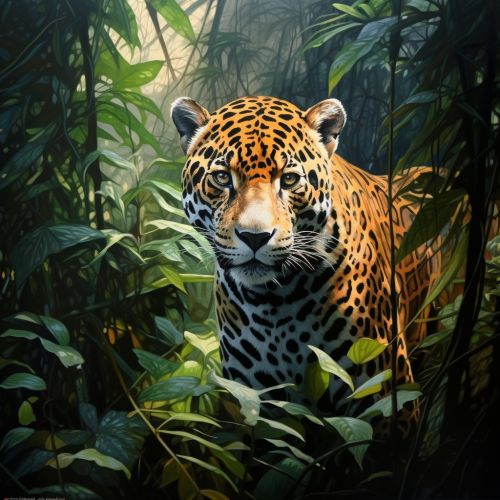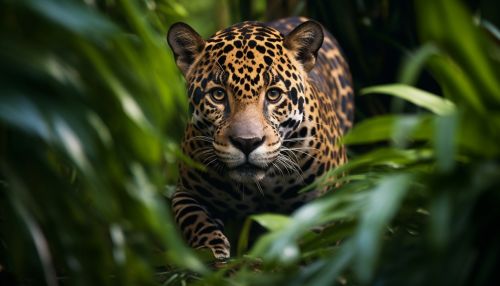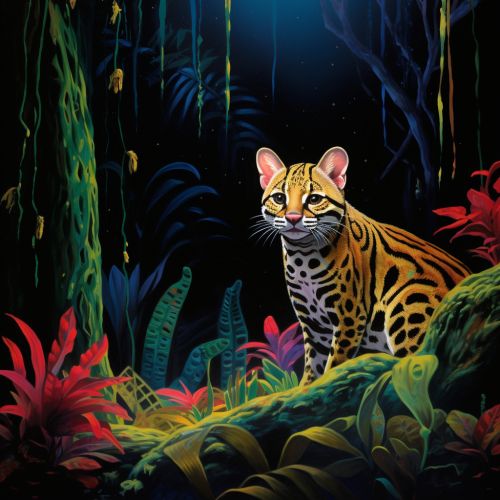The Biological Mechanisms of Animal Adaptation to Rainforest Environments
Introduction
The biological mechanisms of animal adaptation to rainforest environments encompass a wide range of physiological, morphological, and behavioral traits that have evolved over time to enable survival in these unique habitats. Rainforests are characterized by their high rainfall, humidity, and temperature, as well as their dense vegetation and diverse animal and plant species. This article will delve into the various ways animals have adapted to thrive in these challenging environments.
Physiological Adaptations
Physiological adaptations are internal body processes that help an animal survive in its environment. These include metabolic changes, temperature regulation, and adaptations to diet and digestion.
Metabolic Changes
Many rainforest animals have evolved metabolic adaptations to cope with the high temperatures and humidity of their environment. For example, some species of sloths have a very slow metabolic rate, which allows them to conserve energy in an environment where food can be scarce.


Temperature Regulation
Temperature regulation is another important physiological adaptation. Many rainforest animals have developed ways to regulate their body temperature to cope with the high heat and humidity. For example, many species of frogs and reptiles are ectothermic, meaning they rely on the environment to regulate their body temperature.
Diet and Digestion
Diet and digestion adaptations are also crucial for survival in the rainforest. Many rainforest animals have specialized diets and have evolved specific digestive systems to process these foods. For example, the leafcutter ant has a specialized gut bacteria that helps it digest leaves, a food source that many other animals cannot utilize.


Morphological Adaptations
Morphological adaptations are physical characteristics that have evolved to help an animal survive in its environment. These can include changes in body size and shape, coloration, and specialized body parts.
Body Size and Shape
The size and shape of an animal's body can greatly influence its ability to survive in the rainforest. For example, many rainforest animals are small in size, which allows them to move through the dense vegetation more easily. Others, like the jaguar, have powerful bodies adapted for hunting in the dense forest.


Coloration
Coloration is another important morphological adaptation. Many rainforest animals have evolved vibrant colors and patterns to blend in with their surroundings, deter predators, or attract mates. For example, the poison dart frog uses its bright colors to warn predators of its toxicity.
Specialized Body Parts
Specialized body parts can also play a crucial role in an animal's survival. For example, many rainforest birds, like the toucan, have large, specialized beaks adapted for their specific diet.


Behavioral Adaptations
Behavioral adaptations are actions animals take to survive in their environment. These can include changes in activity patterns, social behavior, and mating strategies.
Activity Patterns
Many rainforest animals have adapted their activity patterns to take advantage of the cooler temperatures and lower predator activity at night. These nocturnal animals, such as the ocelot, have specialized senses to help them navigate and hunt in the dark.


Social Behavior
Social behavior adaptations can also be crucial for survival. For example, many species of monkeys live in large social groups, which can provide protection from predators and increase the chances of finding food.
Mating Strategies
Mating strategies are another important aspect of behavioral adaptation. Many rainforest animals have complex mating rituals, such as the bird of paradise, which performs an elaborate dance to attract a mate.
Conclusion
In conclusion, the biological mechanisms of animal adaptation to rainforest environments are diverse and complex, involving a range of physiological, morphological, and behavioral traits. These adaptations have evolved over time to enable animals to survive and thrive in one of the most challenging and diverse habitats on Earth.
